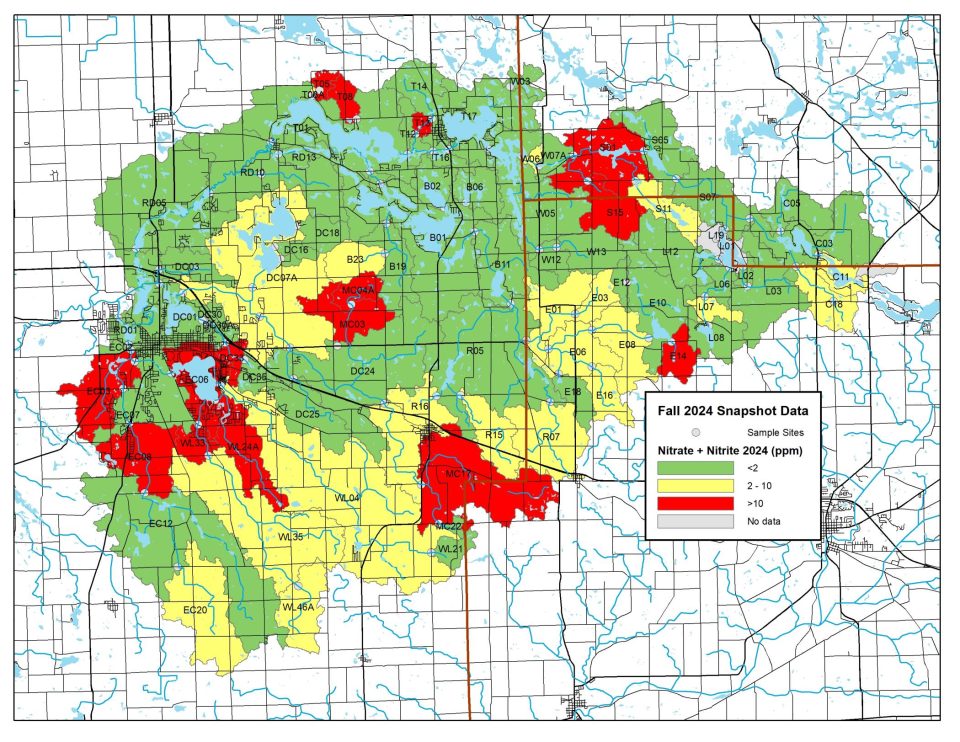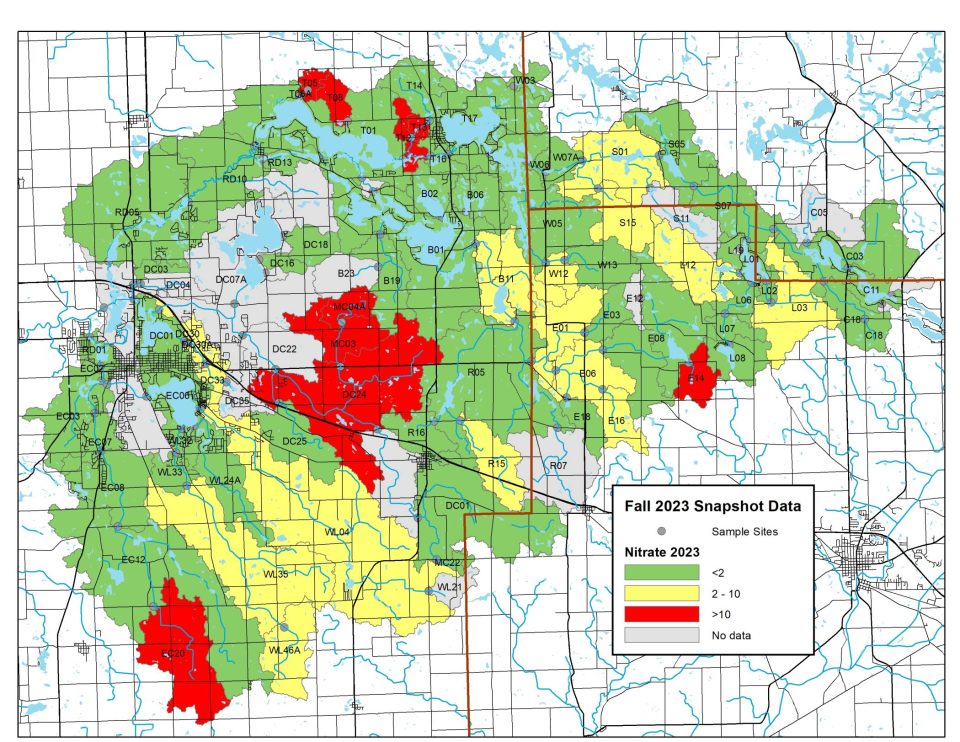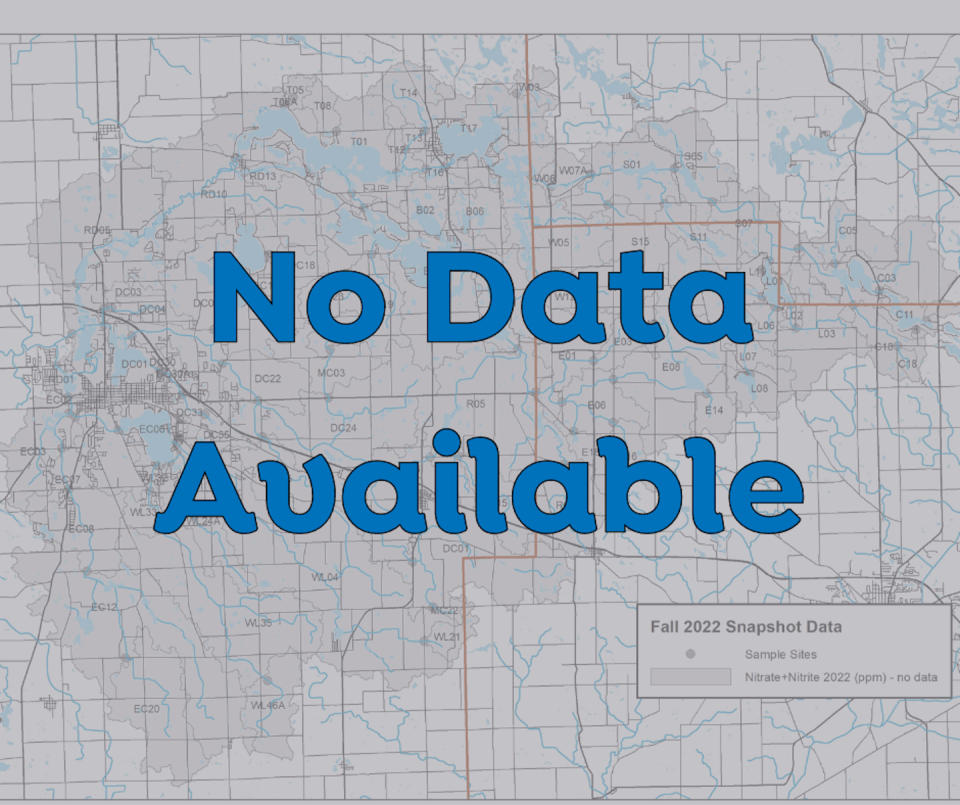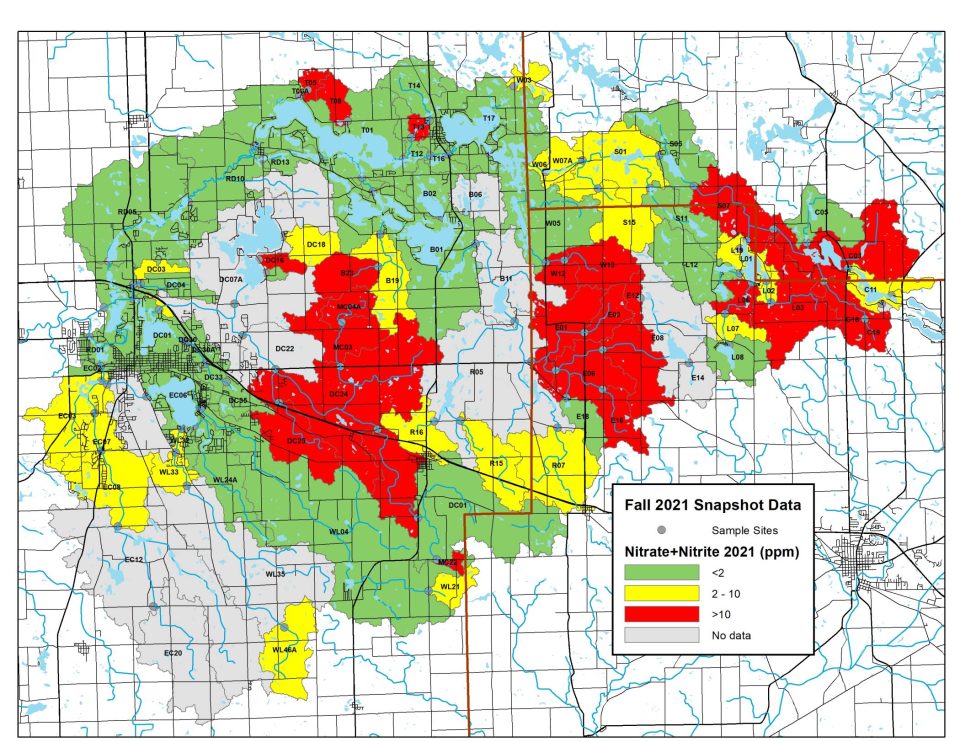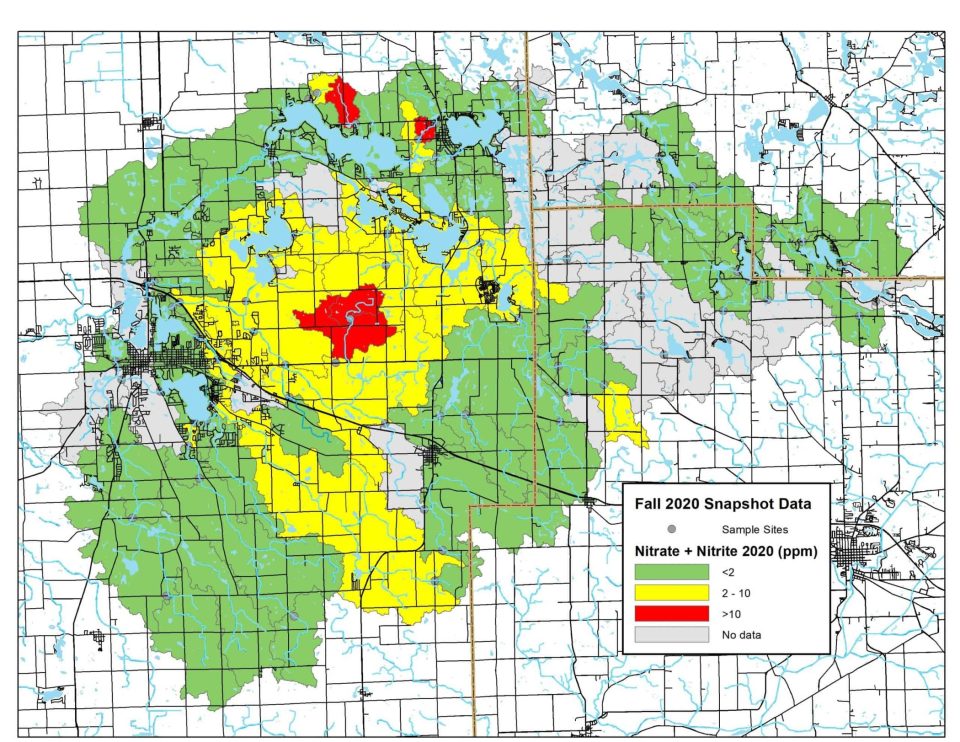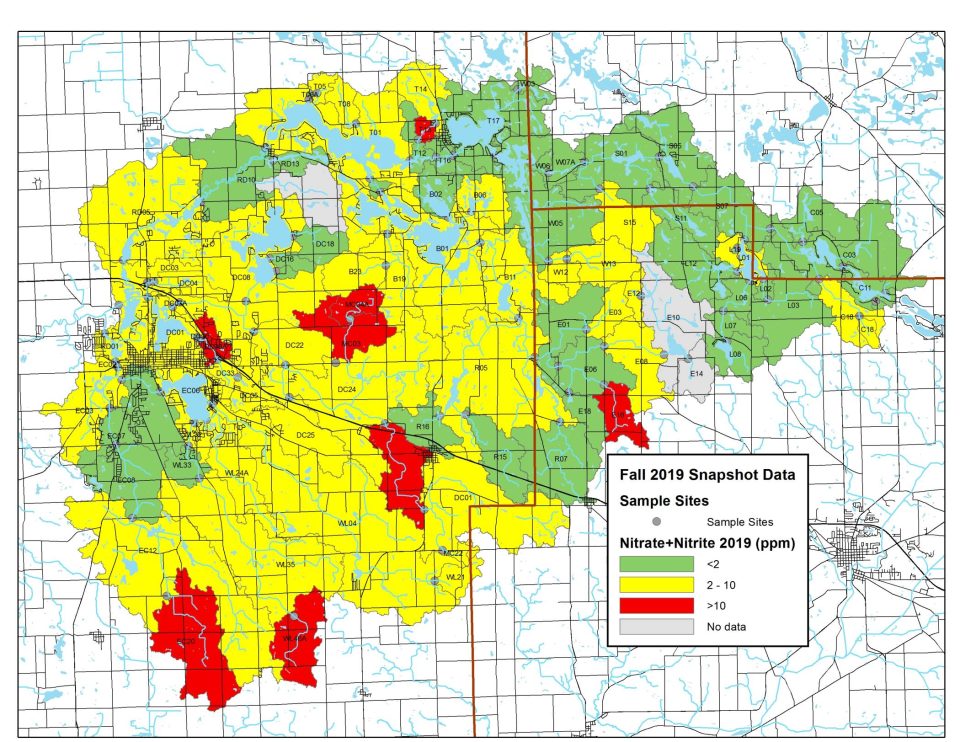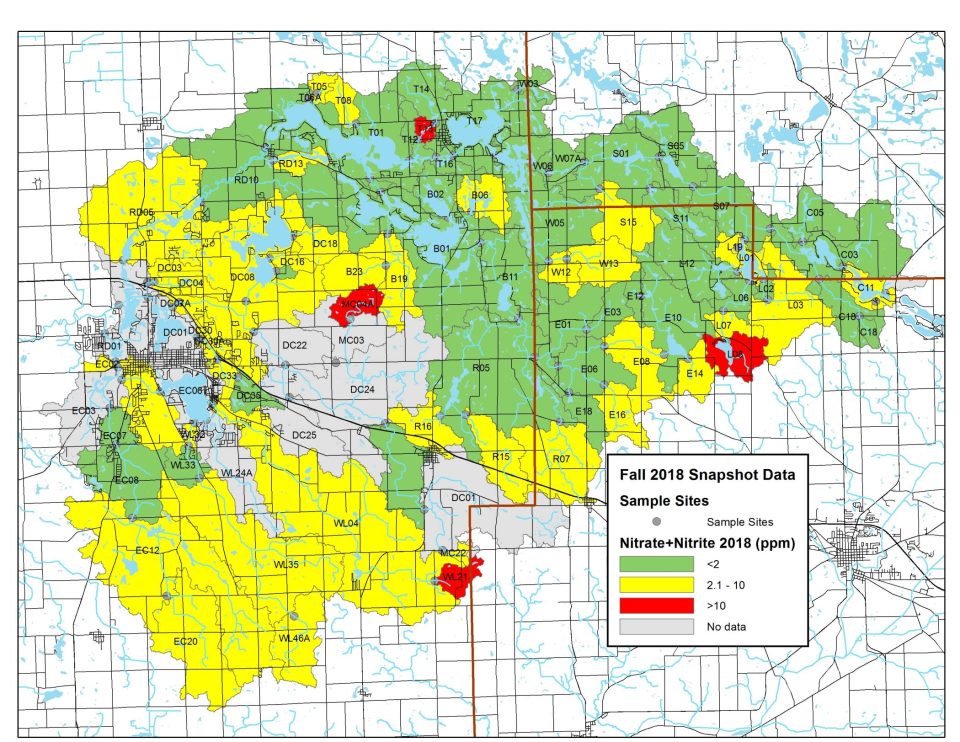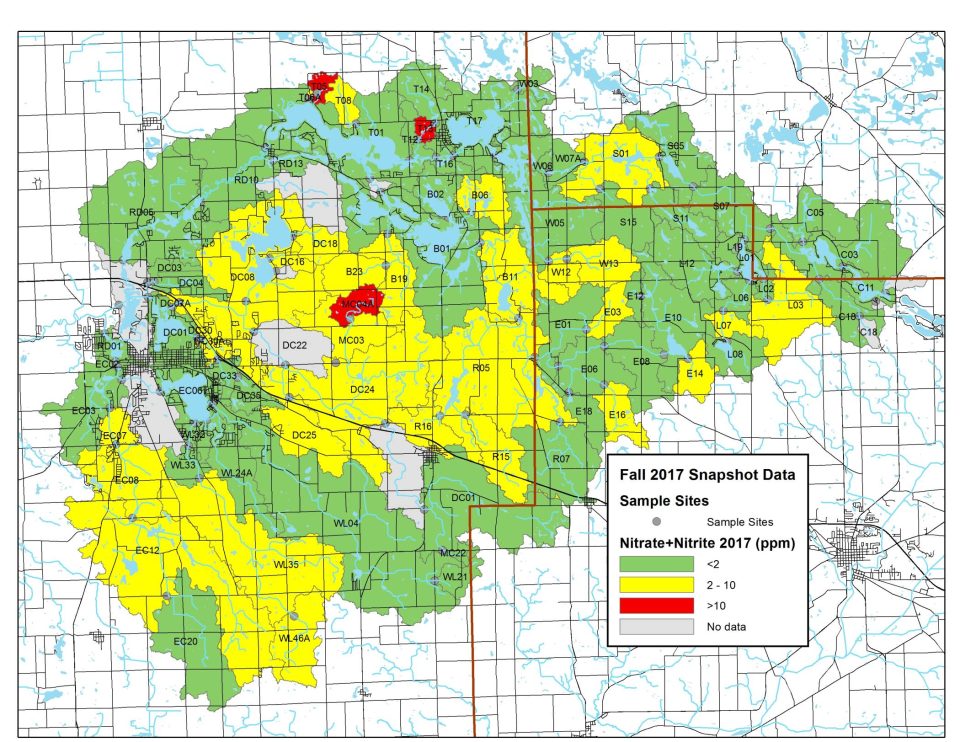Snapshot Day Results: Nitrate & Nitrite
See Full Monitoring Results and Maps Below
Too much nitrogen in our water can have devastating effects for plants, animals, and humans.
Nitrogen occurs in water as nitrate, nitrite, and ammonia. It enters the water through human and animal waste, decomposing organic matter, and fertilizer in runoff from lawns and farm fields. Like phosphorus, nitrogen is an essential nutrient that stimulates plant growth. But excess nitrogen can trigger overgrowth of aquatic plants, including algae blooms. Ultimately, too much plant growth (and decay) can speed up the process of eutrophication — the death of a lake. It also creates a poor aquatic habitat and can make drinking water unsafe.
On Snapshot Water Monitoring Day, volunteers test for nitrates and nitrites at sites across our watershed. Each year, we consistently find large areas of moderate to critically high nitrate-nitrite levels, likely due to poorly functioning septic systems and runoff from agricultural land surrounding local lakes and streams.
Explore full results below. Click on any map to zoom in.
2023 Nitrate-Nitrite Levels
In 2023, monitoring revealed an overall improvement in nitrate-nitrite levels across the watershed, though many sites still showed moderate to critically high levels.
2021 Nitrate-Nitrite Levels
2021 monitoring showed an increase in nitrate-nitrite levels, including several areas with levels that exceeded state water quality standards. The highest concentrations were found in the central and upper portion of the watershed, near the headwaters.
2020 Nitrate-Nitrite Levels
In 2020, monitoring showed an overall improvement in nitrate-nitrite levels across the watershed. Areas of moderate to critically-high concentrations were found, especially in the central portion of the watershed.
2019 Nitrate-Nitrite Levels
In 2019, monitoring showed a significant increase in nitrate-nitrite levels across the watershed, including several areas with concentrations that exceeded state water quality standards.
2018 Nitrate-Nitrite Levels
In 2018, monitoring showed elevated levels of nitrate-nitrite across the watershed, including large areas of moderately-high concentrations.
